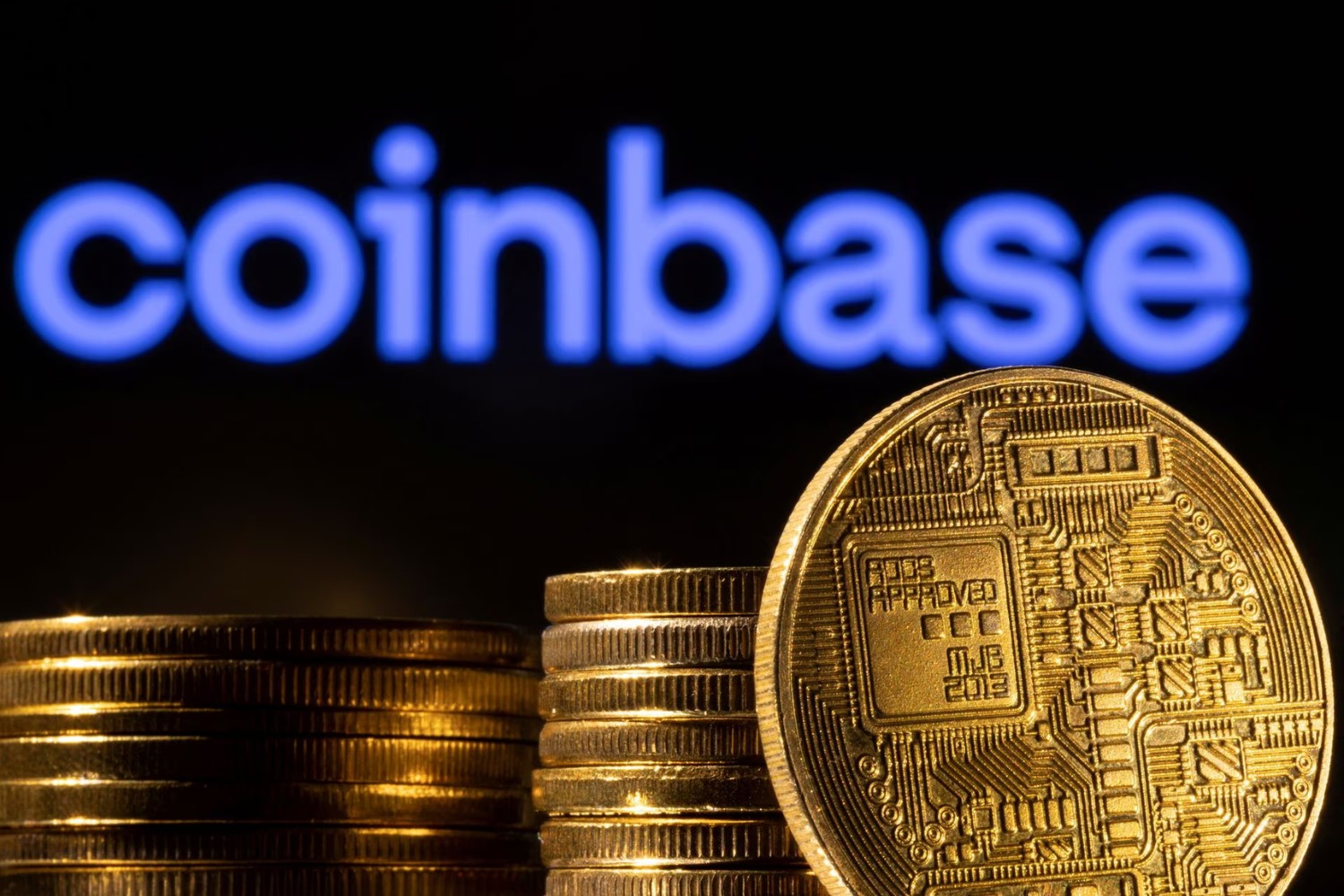What is a Stablecoin?
A stablecoin is a type of cryptocurrency designed to offer stability in value by pegging its price to a specific underlying asset, such as fiat currency, precious metals, or other cryptocurrencies. Unlike volatile cryptocurrencies like Bitcoin or Ethereum, which can experience significant price swings, stablecoins aim to provide a more reliable and predictable value.
Stablecoins achieve price stability through various mechanisms. The most common approach is pegging the value of the stablecoin to a fiat currency like the US Dollar or the Euro. This means that for every stablecoin in circulation, there is an equivalent amount of the underlying asset held in reserves. This ensures that the stablecoin’s value remains relatively constant and minimizes the risk of sudden price fluctuations.
Stablecoins offer a range of benefits compared to traditional cryptocurrencies. Firstly, they provide a reliable medium of exchange, allowing users to transact with a cryptocurrency that maintains a steady value. This makes stablecoins particularly useful in sectors like e-commerce, where merchants and consumers can avoid the uncertainty associated with volatile cryptocurrencies.
Moreover, stablecoins offer a gateway to the world of decentralized finance (DeFi), enabling users to access various financial services built on blockchain platforms. Stablecoins serve as the bridge between traditional financial systems and decentralized systems, enabling users to enjoy the benefits of blockchain technology while ensuring stability in their financial transactions.
Another advantage of stablecoins is their potential to mitigate risk in cryptocurrency investments. By holding stablecoins, investors can protect their portfolio from the wild price fluctuations often associated with other cryptocurrencies. This stability provides a sense of security and reduces the potential for significant losses.
In summary, stablecoins are a crucial instrument in the world of cryptocurrencies, offering stability, reliability, and predictable value. These digital assets open up a wide range of opportunities for both individuals and businesses, allowing them to transact, invest, and participate in decentralized finance with confidence.
Advantages of Stablecoins
Stablecoins offer a range of advantages that make them an attractive option within the cryptocurrency ecosystem. Let’s explore the key benefits of stablecoins:
1. Stability and Security: The primary advantage of stablecoins is their ability to maintain a stable value. By pegging their price to a specific asset, stablecoins reduce the volatility that is often associated with traditional cryptocurrencies. This stability provides users with confidence in their holdings and makes stablecoins a reliable medium of exchange.
2. Privacy and Transparency: Stablecoins can offer a balance between privacy and transparency. While traditional financial systems often require users to disclose personal information, stablecoins built on blockchain technology can provide a level of privacy. This allows users to transact securely without revealing sensitive information.
3. Use Cases of Stablecoins: Stablecoins have numerous applications across various sectors. They enable individuals and businesses to transact seamlessly, both domestically and internationally, without the need for intermediaries. Additionally, stablecoins can be used in decentralized finance (DeFi) protocols for lending, borrowing, and earning interest.
4. Hedging Against Crypto Volatility: Cryptocurrency traders and investors can use stablecoins as a hedge against the volatility of other cryptocurrencies. By holding stablecoins, they can quickly and easily convert their assets into a more stable form, protecting their portfolio value during times of market uncertainty.
5. Cross-Border Transactions: Stablecoins offer a solution to the inefficiencies and delays often associated with cross-border transactions. By leveraging the speed and security of blockchain technology, stablecoins enable fast and cost-effective transfers, eliminating the need for intermediaries and reducing transaction fees.
6. DeFi Lending and Borrowing: Stablecoins play a vital role in decentralized finance (DeFi) lending and borrowing platforms. Users can collateralize their stablecoins to borrow other cryptocurrencies, unlocking liquidity without the need for traditional financial institutions. This creates new opportunities for individuals to access financial services, regardless of their geographical location or banking infrastructure.
7. Flexibility in Portfolio Management: Stablecoins provide users with flexibility in managing their cryptocurrency portfolio. They serve as a stable anchor that allows investors to easily move in and out of other cryptocurrencies, taking advantage of market opportunities and rebalancing their holdings as needed.
These advantages make stablecoins an important and valuable addition to the cryptocurrency ecosystem. They provide stability, privacy, and a wide range of use cases, making them a favorable choice for individuals, businesses, and investors looking for reliability and security within the ever-evolving world of digital assets.
Stability and Security
One of the key advantages of stablecoins is the inherent stability they offer. Unlike volatile cryptocurrencies that can experience significant price fluctuations, stablecoins aim to maintain a steady value by pegging it to a specific underlying asset or basket of assets. This stability makes stablecoins an appealing choice for users looking for predictability in their digital transactions.
Stablecoins achieve stability through various mechanisms. The most common approach is pegging the value of the stablecoin to a fiat currency like the US Dollar or the Euro. This means that for every stablecoin in circulation, there is an equivalent amount of the underlying asset held in reserves. This ensures that the stablecoin’s value remains relatively constant and reduces the risk of sudden price swings.
In addition to pegging to fiat currencies, stablecoins can also be backed by other valuable assets such as precious metals or a diversified portfolio of cryptocurrencies. This provides an extra layer of stability and security, as the value of these assets tends to be less volatile compared to individual cryptocurrencies.
The stability offered by stablecoins has several benefits. For users, stablecoins provide a reliable unit of account and medium of exchange. Merchants and consumers can transact using stablecoins without worrying about the potential value fluctuations that can occur with other cryptocurrencies. This stability is particularly advantageous in e-commerce, where both buyers and sellers want to avoid the uncertainty associated with volatile digital currencies.
Moreover, stablecoins mitigate risks for investors. By holding stablecoins, investors can protect their portfolio from the extreme price volatility often associated with other cryptocurrencies. This stability provides a sense of security and reduces the potential for significant losses. Investors can confidently hold stablecoins, knowing that the value is unlikely to experience drastic swings.
From a security perspective, stablecoins offer enhanced protection compared to traditional financial systems. Blockchain technology, which underpins stablecoins, provides transparency, immutability, and security for transactions. This ensures that transactions involving stablecoins are highly secure and resistant to fraud or manipulation. Additionally, stablecoins built on decentralized networks further enhance security by removing the reliance on a single centralized authority.
Overall, stability and security are fundamental characteristics of stablecoins. Their value stability and the trust derived from the underlying asset backing make stablecoins an attractive option for individuals, businesses, and investors seeking reliability and security in the fast-paced world of digital currencies.
Privacy and Transparency
Stablecoins strike a balance between privacy and transparency, offering users a level of control over their financial transactions while maintaining a transparent and immutable record on the blockchain. This unique characteristic makes stablecoins appealing to individuals and businesses seeking privacy and security in their digital transactions.
When it comes to privacy, stablecoins built on blockchain technology can provide users with a higher degree of anonymity compared to traditional financial systems. While traditional transactions often require the disclosure of personal information, stablecoin transactions can be executed with a certain level of privacy. Users can transact without revealing sensitive personal details, protecting their identity and financial information.
Stablecoins also offer pseudonymity, meaning that users’ identities are not directly linked to their transactions. Instead, transactions are identified by unique wallet addresses, creating a level of privacy for users engaging in financial transactions.
However, it is important to note that the level of privacy offered by stablecoins can vary depending on the specific protocol and implementation. Certain stablecoins, such as privacy-focused coins like Monero, offer additional features specifically designed to enhance privacy by obfuscating transaction details and hiding wallet addresses.
On the other hand, stablecoins also provide transparency through the blockchain technology that underpins their operation. Each transaction involving stablecoins is recorded on a public ledger, allowing anyone to verify the transaction history. This transparency ensures that the system is secure and promotes trust among users.
The transparency offered by stablecoins goes hand in hand with accountability. Since stablecoin transactions are recorded on the blockchain, the entire network can be audited and monitored, reducing the potential for fraud or manipulation. This auditability strengthens the overall security of stablecoin transactions.
Furthermore, stablecoins built on decentralized platforms eliminate the need for a central authority to maintain and oversee transactions. This decentralized nature enhances transparency by removing the reliance on a single entity, ensuring that transactions are verifiable by anyone participating in the network.
In summary, stablecoins offer a desirable balance between privacy and transparency. They provide users with a certain level of anonymity while ensuring transparency and immutability through the use of blockchain technology. The privacy and transparency provided by stablecoins make them an attractive option for individuals and businesses looking for secure and confidential digital transactions.
Use Cases of Stablecoins
Stablecoins have numerous applications across various sectors, thanks to their stability, speed, and reliability. Let’s explore some of the key use cases of stablecoins:
1. Seamless Payments: Stablecoins serve as a reliable medium of exchange, making them an ideal choice for everyday transactions. Merchants and consumers can transact using stablecoins without the uncertainty and volatility associated with traditional cryptocurrencies. This use case is particularly relevant in sectors such as e-commerce, where stability in value is crucial for successful transactions.
2. Cross-Border Transactions: Stablecoins offer a solution to the inefficiencies and delays often associated with cross-border payments. Traditional methods can involve high fees and lengthy processing times. With stablecoins, individuals and businesses can transfer value across borders quickly and cost-effectively, eliminating the need for intermediaries and reducing transaction fees.
3. Decentralized Finance (DeFi): Stablecoins play a vital role in decentralized finance (DeFi) applications. They serve as a stable unit of account and collateral within DeFi protocols, enabling users to borrow, lend, and earn interest on their holdings. Stablecoin-backed lending platforms offer individuals access to financial services without relying on traditional banks or centralized institutions.
4. Hedging Against Crypto Volatility: Cryptocurrency investors often use stablecoins as a hedge against the volatility of other digital assets. During times of market uncertainty or when they wish to preserve their gains, investors can quickly convert their volatile cryptocurrencies into stablecoins, protecting their portfolio from significant price fluctuations.
5. Remittances and Financial Inclusion: Stablecoins have the potential to revolutionize remittance services, particularly in regions with limited access to banking infrastructure. By leveraging blockchain technology, stablecoins offer a more cost-efficient and accessible means of sending and receiving money globally, empowering individuals who previously faced barriers to traditional financial systems.
6. Stability in Volatile Economies: Stablecoins can provide stability in regions with high inflation or volatile currencies. People living in these areas can use stablecoins as a reliable store of value, protecting their wealth and facilitating day-to-day transactions without being affected by fluctuating local currencies.
7. Supply Chain Management: Stablecoins can be utilized in supply chain management to facilitate transparent and efficient transactions between suppliers, manufacturers, and customers. Using stablecoins within the supply chain can streamline payment processes, reduce costs, enhance transparency, and improve overall operational efficiency.
These are just a few examples of the diverse use cases of stablecoins. Their stability, speed, and ability to bridge traditional finance and blockchain technology make them a valuable tool for individuals, businesses, and economies worldwide.
Hedging Against Crypto Volatility
One of the significant advantages of stablecoins is their ability to act as a hedge against the inherent volatility of other cryptocurrencies. The volatile nature of cryptocurrencies like Bitcoin and Ethereum can lead to substantial price fluctuations, which can be a cause of concern for investors and traders. Stablecoins provide a reliable means to mitigate these risks.
By converting volatile cryptocurrencies into stablecoins, investors can preserve their gains and protect their portfolio from sudden market downturns. Stablecoins, with their stable value pegged to an underlying asset or currency, provide a secure anchor in times of market uncertainty. This stability allows investors to hold and store their value without the fear of significant price fluctuations.
When the cryptocurrency market experiences a period of volatility, investors can quickly and easily convert their holdings into stablecoins as a safe haven. This strategic move helps to minimize potential losses and hedge against the inherent risk of the crypto market. Once stability returns to the market, investors can convert their stablecoins back into other cryptocurrencies or traditional assets.
Stablecoins provide a stable unit of account during periods of high volatility, enabling individuals and businesses to make informed decisions and plan for the future. For example, merchants who accept cryptocurrencies as payment can utilize stablecoins to minimize their exposure to price volatility. By accepting stablecoins as payment, they can avoid the risk of their revenue being affected by sudden price fluctuations.
Moreover, stablecoins offer stability in the world of decentralized finance (DeFi). DeFi platforms provide lending and borrowing services, where users can deposit their cryptocurrencies as collateral to secure loans. By using stablecoins as collateral, borrowers can hedge against potential price volatility of their crypto assets. Similarly, lenders can mitigate risks by receiving stablecoins as interest payments, ensuring a steady and predictable return on their investments.
Overall, stablecoins serve as a vital tool for investors and traders in managing the volatility associated with cryptocurrencies. They offer stability, preserve value, and act as a reliable hedge during tumultuous market environments. The ability to hedge against crypto volatility makes stablecoins a valuable asset for those seeking to minimize risks and maintain a more stable investment portfolio.
Cross-Border Transactions
Stablecoins have emerged as a game-changer in the realm of cross-border transactions, offering a more efficient, cost-effective, and secure alternative to traditional methods. The inherent features of stablecoins, such as speed, global accessibility, and low transaction fees, make them particularly well-suited for international money transfers.
Traditional cross-border transactions often involve multiple intermediary banks, lengthy processing times, high fees, and potential currency exchange rate fluctuations. These challenges can make international transfers cumbersome and expensive, especially for individuals and businesses in developing countries or regions with limited access to banking services.
Stablecoins provide a solution by leveraging blockchain technology and its inherent benefits. As digital assets built on decentralized networks, stablecoins enable users to transfer value across borders quickly, securely, and at a fraction of the cost associated with traditional methods.
By using stablecoins for cross-border transactions, individuals and businesses can bypass the need for intermediaries, reducing transaction fees and providing faster settlement times. The peer-to-peer nature of stablecoin transactions eliminates the need for banks, foreign exchange services, and other intermediaries, streamlining the process and reducing associated costs.
Additionally, stablecoins offer a stable unit of account for cross-border transactions. Instead of dealing with volatile currencies, individuals and businesses can transact using stablecoins whose value remains consistent. This stability provides certainty in terms of the amount received or paid, eliminating the risk of exchange rate fluctuations.
Stablecoins also facilitate financial inclusion, enabling individuals without access to traditional banking services to participate in global commerce. By simply possessing a stablecoin wallet and an internet connection, individuals can transact globally, regardless of their geographic location or the infrastructure of their local financial system.
Moreover, stablecoins can facilitate remittances, allowing individuals to send money to their families or businesses in different countries more efficiently. Instead of relying on traditional remittance services, which often charge high fees and take several days to process transactions, stablecoins offer a faster and cheaper alternative, enabling near-instantaneous transfers at a fraction of the cost.
Overall, stablecoins have revolutionized cross-border transactions, providing individuals and businesses with a faster, more affordable, and secure means of transferring value across borders. By leveraging blockchain technology, stablecoins have removed barriers, opened up new possibilities for global commerce, and improved financial inclusion for individuals and businesses worldwide.
DeFi Lending and Borrowing
Stablecoins have opened up exciting opportunities within the world of decentralized finance (DeFi), particularly in the realm of lending and borrowing. DeFi lending and borrowing platforms leverage stablecoins as a key component, enabling individuals to access financial services in a decentralized and trustless manner.
One of the primary use cases of stablecoins in DeFi is as collateral for loans. Users can collateralize their stablecoins by depositing them into a smart contract, which then allows them to borrow other cryptocurrencies or stablecoins. This approach provides individuals with liquidity without requiring them to sell their existing crypto holdings.
Stablecoin-backed lending platforms offer several advantages over traditional lending systems. Firstly, they eliminate the need for intermediaries such as banks, reducing costs and removing the requirement for stringent credit checks. Decentralized lending protocols operate based on predefined rules defined by smart contracts, ensuring a fair and transparent process for all participants.
Furthermore, stablecoin-backed loans benefit from the stability of the underlying asset. Since stablecoins are designed to maintain a stable value, borrowers can better predict and plan for the repayment of their loans. This stability reduces the risk of default, making stablecoin-backed lending an attractive option for both borrowers and lenders.
On the lender side, stablecoin lending allows users to earn interest on their holdings. Users can lend their stablecoins to borrowers via DeFi lending platforms and earn interest on the loan. This interest accrues over time, providing a passive income stream for the lenders while they hold their stablecoins.
DeFi lending and borrowing using stablecoins also offer global accessibility. Anyone with an internet connection can participate in decentralized lending platforms, regardless of their location or financial standing. This opens up new opportunities for individuals who may not have access to traditional banking services, thereby promoting financial inclusion.
Another advantage of DeFi lending and borrowing with stablecoins is the composability of these protocols. Participants can use their borrowed stablecoins as collateral for other loans or leverage their positions to participate in other DeFi protocols, such as yield farming or liquidity provision. This flexibility allows individuals to maximize their returns and optimize their use of capital within the DeFi ecosystem.
Overall, DeFi lending and borrowing with stablecoins provide individuals with a decentralized, transparent, and efficient way to access financial services. These platforms enable borrowers to utilize their stablecoin holdings as collateral for loans, while lenders can earn interest on their stablecoin holdings. By leveraging blockchain technology and smart contracts, stablecoin-backed lending and borrowing in DeFi have revolutionized the financial landscape, opening up new possibilities for participants worldwide.
Flexibility in Portfolio Management
Stablecoins offer individuals and investors significant flexibility in managing their cryptocurrency portfolios. The stable value and liquidity of stablecoins make them an invaluable tool for optimizing portfolio allocations and taking advantage of market opportunities.
One of the key benefits of stablecoins is their ability to act as a stable anchor within a cryptocurrency portfolio. Cryptocurrencies like Bitcoin and Ethereum are known for their price volatility, which can create challenges for investors seeking to balance their portfolios. By holding stablecoins, investors can easily move in and out of other cryptocurrencies, reducing the potential risk associated with market fluctuations.
For example, during periods of market uncertainty or when investors wish to preserve their gains, they can quickly convert their volatile cryptocurrencies into stablecoins. This strategic move allows them to maintain a more stable value while waiting for favorable market conditions. When opportunities arise, investors can then convert their stablecoins back into other cryptocurrencies or traditional assets.
Moreover, stablecoins enable portfolio diversification within the cryptocurrency space. By incorporating stablecoins into their investment strategy, individuals can reduce their exposure to the volatility of certain cryptocurrencies, effectively mitigating risk. This flexibility helps investors construct well-balanced portfolios that align with their risk tolerance and investment goals.
Stablecoins also offer flexibility in terms of investment timing. Investors can utilize stablecoins as a temporary store of value, allowing them to wait for the right investment opportunities. By holding stablecoins, investors can swiftly deploy their capital when they identify favorable market conditions or specific trading opportunities.
Additionally, stablecoins provide flexibility within decentralized finance (DeFi) platforms. Investors can use stablecoins to participate in various DeFi protocols such as yield farming, liquidity provision, or staking. These platforms often require users to deploy assets, and stablecoins offer a reliable and stable option for investors to engage in these activities without incurring the risks associated with more volatile cryptocurrencies.
The flexibility provided by stablecoins extends beyond individual investors. Businesses can also benefit from stablecoins in their portfolio management. Companies utilizing stablecoins as a means of payment or store of value enjoy a reliable medium of exchange that minimizes the impact of price fluctuations. Additionally, stablecoins can facilitate faster and more efficient cross-border transactions, allowing businesses to streamline their international operations.
In summary, stablecoins offer a high degree of flexibility in portfolio management. Their stable value, liquidity, and versatility in various investment strategies make them a valuable asset for investors seeking to optimize portfolio allocations, diversify risk, and capture market opportunities. By incorporating stablecoins into their portfolios, individuals and businesses can make informed decisions, react swiftly to market conditions, and achieve greater stability in their cryptocurrency holdings.
Conclusion
Stablecoins have emerged as a crucial component of the cryptocurrency ecosystem, offering a myriad of benefits and use cases. Their stability, security, and efficiency make them an attractive option for individuals, businesses, and investors seeking reliable digital transactions.
Through their pegged value, stablecoins provide stability in a volatile crypto market, allowing users to transact with confidence and mitigate risks associated with price fluctuations. Stability makes stablecoins an ideal medium of exchange for everyday transactions and e-commerce, eliminating the uncertainty that often accompanies traditional cryptocurrencies.
Furthermore, stablecoins offer privacy and transparency, striking a balance between anonymity and accountability. Users can enjoy the privacy benefits of blockchain technology while ensuring transaction transparency and auditability, promoting trust and security.
The use cases of stablecoins are diverse, ranging from seamless payments and cross-border transactions to decentralized finance (DeFi) lending and borrowing. Stablecoins enable users to engage in global commerce, access financial services, and participate in DeFi protocols with ease, reducing barriers to entry and fostering financial inclusion.
Stablecoins also provide invaluable tools for portfolio management. Their stability and flexibility allow investors to hedge against crypto volatility, optimize their holdings, and capitalize on market opportunities. Additionally, stablecoins offer businesses a stable medium of exchange and facilitate cross-border transactions, streamlining international operations.
In conclusion, stablecoins have revolutionized the cryptocurrency landscape, offering stability, security, privacy, and a wide range of use cases for individuals and businesses alike. As the demand for reliable and efficient digital transactions continues to grow, stablecoins are poised to play a significant role in shaping the future of finance and commerce.

























